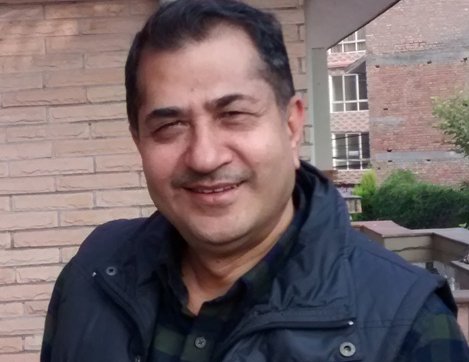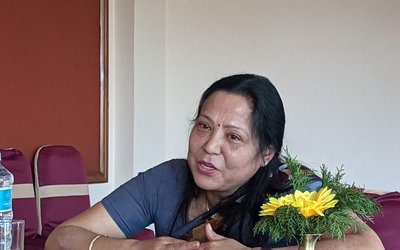
How do you see the state of post earthquake scenario after six months?
The current situation is alarming in two senses. All of us including bilateral, multilateral donor agencies, government and civil society, have been preaching the slogan of building back better. However, there is no agreed framework among the agencies nor any directives from the government for this yet. There is lack of shared clarity and the organisations are working according to their own procedure. Particularly, the government needs to play a coordinative role, taking the lead. It needs to announce the building codes for rural and urban areas. The government needs to issue directives about resilient structures and define roles and responsibilities to all the concerned line agencies. As there is no guidance, all development agencies will move on their own and there will be problems in coordination and uniformity in terms of technicality.
How do you describe the situation?
In the absence of help, people have already started reconstruction on their own capacity. Those who have access to big remittances have started to construct new houses individually using the thumb rule and those who receive nominal remittances have also started construction using stone and mud. Such buildings cannot sustain even a 6-Richter scale of earthquake. It will be costly and vulnerable.
Why is it so?
The delay in the constitution of the Reconstruction Authority has created confusion and dilemma on what to do and what not to do. The blockade has made the situation much worse as the supply of construction materials has badly been affected. In the absence of construction materials, the quality of construction will be affected. As there is no cement, iron and other materials, even those who can afford to buy such items have already started to reconstruct the buildings with available materials. As winter has already approached, people have started to construct the buildings with available raw materials including mud, wood and stone. This means inviting another risk. As Nepal lies in an earthquake prone zone, one cannot rule out the possibility of another big earthquake. Although earthquakes are unpredictable, some people hold the view that there will be no major earthquake soon.
Why are they vulnerable?
If the buildings are constructed using the same local materials, Nepal will again face a similar kind of damage in another earthquake. Failure of formation of Reconstruction Authority and current blockade are badly affecting the work of building earthquake resistant buildings. Short supply of petroleum products has minimized the mobility of people and transfer of construction materials. This is the reason the situation is alarming.
What will be other consequences?
Due to the present situation, women and children are suffering a lot. As winter knocks the door, more hardship is waiting for the earthquake victims. As most of the rural population uses biomass including cow dung and agriculture residue as a sources of energy, the short supply of kerosene and LPG might have little implications. However, the disruption of mobility and short supply of construction materials will have a long term implication in reconstruction. It will increase the possibility of pneumonia among children and old people.
How is your organization helping?
Only after the announcement of guidelines and building codes, organizations like Practical Action can go to the hills to build better buildings. The government must come up with a framework. For instance, what model of the houses does the government want to see in the rural hill areas?
What roleshave INGOs been playing? In what areas Practical Action has been working?
You cannot put all INGOs in the same basket as there are different categories of INGOs. As far as Practical Action is concerned, we are a development oriented INGO. There are some INGOs focusing on relief, others focus on advocacy, political and human rights. All these INGOs have different objectives and their working styles are different. Common people do not understand this and they look at all the INGOs with similar perspectives. Due to these perspectives of people, INGOs sector is defamed.
How different is the Practical Action from rest of INGOs?
Ours is truly a development organization and we are even not a relief organization. We rarely do immediate relief operations in times disaster. What Practical Action does is regular development activities, particularly in energy; WASH issues; disaster risk reduction with early warning and preparedness, climate change; agriculture and market linkgaes. However, we have decided to join the relief operation during the great earthquake realizing that our responsibility to carry out relief and response operations, looking at our own involvement in various sectors of rural Nepal for over two decades.
Where is Practical Action working now?
Practical Action has been carrying out relief and building better operations in Gorkha and Dhading districts under the coordination of District Disaster Relief and Coordination Committee (DDRC). Headed by Chief District Officer, this is a government committee responsible for coordination of relief and all other operations related to disaster. This is an institution with broader representation of all the district level line agencies. As per their direction and guidelines formulated by them, Practical Action distributed relief materials tarpaulin for shelter in each household of the assigned VDCs. Under the direction and guidelines of DDRC, Practical Action distributed the relief materials in 6 Village Development Committees (VDCs) of Gorkha and 3 VDCs of Dhading. This support has been provided through Practical Action core fund and support from Christian Aid.
How do you view the present disaster management?
We look at it in three phases. For the initial one month, it was relief and response and now is the transitional phase. Our expectation was that during the transitional phase, government would have constituted the reconstruction authority and come out with building codes, bringing the design for resilient houses. Only after that we can move to the build back better program. During this phase, Practical Action has supported building transitional shelters, including mason training, repairing damaged infrastructures, like drinking water taps, toilets and construction of drinking water pipes. Access to energy for the victims through solar lighting and mobile charging facility are other activities. As mobile is the most important technology for communication, Practical Action has set up a number of mobile charging facilities in those villages. We also distributed water purifying tablets (aquatabs) in the areas to treat the contaminated water and make it safe. Transitional phase is going to end in November.
What plan does Practical Action haveforthe next phase?
After completion of this phase, we are supposed to enter build back better phase. There are certain challenges to go for that phase. The challenges are that we don’t have the government mechanism and building designs accepted by the government. Few things come out like concessional loan policy for those who are willing for big money and one time grants for others. We have not seen that somebody really got it. We don’t have any plan to work directly in shelter. What we are considering to do is to provide the information on the safe and resilient building designed by the government. We provide support on agriculture, market and energy system and helping to create enterprise for sustainable wellbeing within our strategic objectives. We are preparing the plan for this.
Practical Action has also given training to masons. How important is this kind of training to build safe houses?
Our training helped a lot during the construction of transitional houses by using salvage materials including woods and bricks. We provided masonry and carpentry training, some cash and galvanized GI sheets. We worked in two villages, Borlang and Asrang of Gorkha district, in coordination with DDRC.
As government is launching the reconstruction phase, what roles will INGOs and NGOs have?
At a time when elected representatives are not there in the local bodies, there will be more problems. In the absence of elected bodies, questions of accountability will arise. Currently, there is Citizen Awareness Ward Forum under LGCDP. This body cannot substitute the elected representatives. However, there is at least an institution. We need to make the current apparatus more effective and capable with transparent and accountable practices. There is a need to work under the coordination of DDRC. This will reduce the possibility of overlapping of work. This will help uniformity. We need to focus more on the coordination under DDRC.
What else do you suggest?
There is the need to constitute the Reconstruction Authority. Although this is a political organization by nature, there is need to select professional people in the authority. If it is involved in politics, it will damage the whole process. There is the need to have an authority with professional people. Strengthening the DDRC is the most important component.
Having worked for a long period of time in the development sector, how do you see the course the country took following the earthquake?
I will have to admit that the course is not going satisfactorily. Although Pakistan was also hit by a big earthquake in 2005, they successfully implemented the reconstruction activities through Earthquake Reconstruction and Rehabilitation Authority. This is the reason many others are requesting Nepal to follow the Pakistani model. I cannot say that nothing has happened in the rural community. Many institutions including the government agencies have been working in rural Nepal but they are unable to work in a comprehensive manner. If there is no concrete plan, the resources will be scattered. The fund pledged by the donors may not come.
Another observation I had observed immediately after the earthquake was showing of dependency syndrome by many villagers although they had sufficient food grains and were required to perform important agricultural activities. Such kind of attitude will invite food insecurity.
- FOREIGN EXCHANGE: Largest Deposit
- Jul 22, 2024
- IMF: Approval Of SDR
- Jul 22, 2024
- NEPAL-KOREA RELATIONS: Fifty-Years Of Warm Relations
- May 31, 2024
- NEPAL-BRITAIN: Centenary Celebration
- May 31, 2024
- POLITCS: Forming New Alliances
- May 27, 2024
















